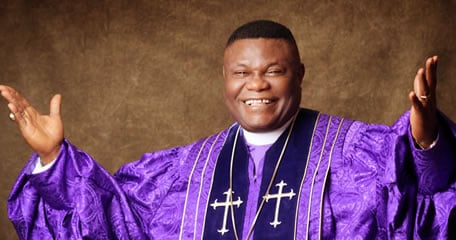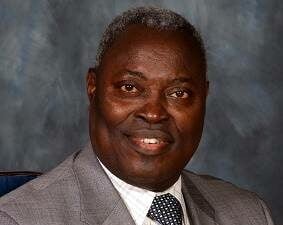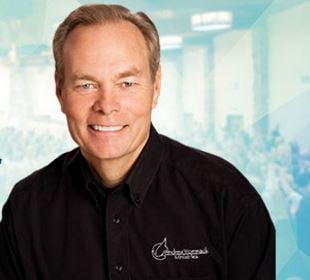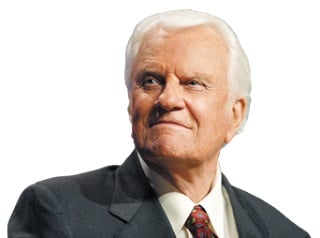ABSTRACT: Robert Murray M’Cheyne (1813–1843), well-known for his development of the M’Cheyne Bible Reading Plan, was characterized by an all-consuming desire to know Christ through his appointed means of grace — particularly those focused on the Bible, the Lord’s Supper, and prayer. These spiritual habits adorned and empowered his public ministry as he faithfully preached the gospel of the God he loved.
Two months before his untimely death, Robert Murray M’Cheyne (1813–1843) made a visit to Collace, Scotland, where one of his closest friends, Andrew Bonar, was the minister. The appearance caused a stir. M’Cheyne was a well-known and beloved preacher, so people crowded onto the church grounds. Not enough seats were available for all those eager to hear M’Cheyne’s sermon. People stood outside, listening through open windows as M’Cheyne preached on 1 Corinthians 9:27. Bonar reported the sermon was “so solemn that one said it was like a blast of the trumpet that would awaken the dead.”1 The hearers’ eagerness for God’s word matched the preacher’s zeal; they stayed at the church until past eleven o’clock that night.
M’Cheyne woke the next morning and went about his regular spiritual habits of reading God’s word and praying. Recalling that Monday morning, Bonar’s old servant later remarked, “Oh, to hear Mr. M’Cheyne at prayers in the morning! It was as if he could never [stop], he had so much to ask. You would have thought the very walls would speak again.”2
The ministry at Collace reveals a vital feature of M’Cheyne’s life: Private communion with God fueled a public ministry that had unusual power and attraction.
The appeal of M’Cheyne’s ministry remains strong today. Countless souls use his Bible reading plan each year. Preachers season their sermons with choice quotes from the young Dundee minister. Sinners hear Christ in the words of one who spoke so tenderly and urgently. Sufferers gain comfort from a man who, like Jesus, didn’t break bruised reeds. Yet the thing about M’Cheyne that may motivate more than anything else is his spiritual devotion.
The present essay unfolds the basics of M’Cheyne’s spiritual habits and concludes with three reflections on how those habits can inspire and instruct pastors today.
The Means of Grace
M’Cheyne was a Scottish Presbyterian. Thus, the Westminster Shorter Catechism had a profound shaping influence on his life and ministry.
Although he wasn’t converted until the age of eighteen, M’Cheyne grew up in various Church of Scotland congregations. The typical Lord’s Day rhythm of his youth consisted of a two-service structure, with a morning service followed by an afternoon service. A catechism service took place in between, during which the minister instructed children from the Shorter Catechism while the parents sat and listened. Friends remembered how a precocious Robert impressed others through “his correct and sweet recitation” of various Scripture passages or answers to the Shorter Catechism.3 Later, while ministering at St. Peter’s, M’Cheyne taught catechism classes to hundreds of young souls.
Question 88 of the Shorter Catechism asks, “What are the outward and ordinary means whereby Christ communicates to us the benefits of redemption?” The answer: “The outward and ordinary means whereby Christ communicates to us the benefits of redemption, are his ordinances, especially the word, sacraments, and prayer; all which are made effectual to the elect for salvation.”
Word. Sacraments. Prayer. These are “the channels through which God pours His Spirit” and the “wells of salvation” through which we drink of God’s all-sufficient grace in Jesus Christ.4 Understanding M’Cheyne’s spiritual habits begins with recognizing that he viewed them as “means of grace.”
Grace Through the Word
Our study of M’Cheyne’s spiritual habits begins with his hunger for God’s word.
“Private communion with God fueled a public ministry that had unusual power and attraction.”In August of 1842, M’Cheyne penned a letter to Horatius Bonar. The letter found M’Cheyne discussing an invitation to minister in Kelso that autumn, where Bonar served as minister. Once the scheduling details were sorted, M’Cheyne had his own invitation to offer. “I have great desire for personal growth in faith and holiness,” he admitted. “I love the Word of God, and find it sweetest nourishment to my soul. Can you help me to study it more successfully?”5
M’Cheyne knew there is no such thing as growth in holiness outside of growth in Scripture. His Bible bore the marks of wear and tear, no matter the spiritual season — in mourning or gladness. His zeal for Scripture amazed those closest to him. One contemporary declared that M’Cheyne “searched and fed upon the Word of God with an eagerness which I have never seen equaled.”6
M’Cheyne’s journals reveal an almost insatiable hunger for God’s word upon conversion. He was always reading the Bible and seeking advice on the most effective study methods. While in seminary, M’Cheyne resolved to read twenty verses in the original languages of the Bible every weekday. Adept in both Greek and Hebrew, he found exceptional beauty in the Old Testament’s mother tongue. A notebook from this period offers six resolutions for reading God’s word:
- Read it regularly. Set apart an exact time for it.
- Read in more places than one. Thus, a historical piece and a devotional psalm, a piece of a gospel and a piece of an epistle.
- Read with parallels. Either 2 or 3 verses. Or the most difficult parts, or the most interesting.
- Read whole books. A whole epistle, or little prophet, and trace and overlook the divisions into chapter and verse.
- Try to understand. Ask where you do not.
- Pray before and after. In devotional parts turn every verse into prayer.7
Such intention with the Bible shaped his habits while ministering in Dundee. His typical practice in the early years at St. Peter’s was to read three chapters of Scripture per day. He didn’t follow any scheme or plan; he went wherever he felt the Spirit lead. M’Cheyne woke early on the Lord’s Day to meet with God through the word. He would review and pray through the previous week’s readings, often continuing the practice late into Sunday’s evening hours.
One year after he was ordained, M’Cheyne created his first Bible reading plan. The plan helped him read the entire Bible in one month, which meant reading close to fifty chapters per day. We don’t know how often he used this plan. Nevertheless, it reveals the priority he placed on reading Scripture.
Part of M’Cheyne’s ministry was helping others grow in the use of God’s word. His letters and sermons demonstrate how often he exhorted congregants to engage in faithful devotional reading. “You read your Bible regularly, of course,” he wrote to a young seeker, “but do try and understand it, and still more, to feel it. Read more parts than one at a time. For example, if you are reading Genesis, read a psalm also; or, if you are reading Matthew, read a small bit of an Epistle also.”8 No matter the person’s age or spiritual maturity, M’Cheyne urged others to “learn to search the Scriptures; to lie down in these green pastures; to drink from those still waters.”9
Continual systematic study of God’s word eventually led to what may be M’Cheyne’s most significant legacy: a Bible reading plan. He told St. Peter’s that he had long desired “to prepare a scheme of Scripture reading . . . so that the whole Bible might be read once by you in the year, and all might be feeding in the same portion of the green pasture at the same time.”10 So, in 1842, M’Cheyne created a Bible reading plan for his church. He published it in early 1843 as a little tract, Daily Bread: Being a Calendar for Reading through the Word of God in a Year.
The plan’s abiding legacy is likely due to its simplicity and utility. By reading an average of four chapters per day, a diligent reader will annually read through the entire Old Testament once and the Psalms and New Testament twice. A special feature of Daily Bread was that two chapters were to be read privately, while the other two were intended for family worship. M’Cheyne believed Bible reading is both a personal and familial matter. Although never married, he would hold family devotions with his sister, Eliza, who often stayed with him, as well as the household servants. They read, discussed, and prayed through the family chapters during the breakfast hour.
Daily Bread is also notable for how it takes the readers through the entire Psalter twice. The Psalms provide language and grammar for the Christian soul, and M’Cheyne saw them as words to be sung as well as read. “If three verses [of the Psalms] be sung at each diet of family worship, the whole Psalms will be sung through in the year,” he encouraged. “Thus every meal will be a Sacrament, being sanctified by the Word and prayer.”11
Grace Through the Ordinances
The ordinances of baptism and especially the Lord’s Supper served as another powerful means of grace in M’Cheyne’s public ministry.
M’Cheyne rarely speaks at length about baptism. Brief comments and anecdotes are more common. As a committed Presbyterian and adherent to the Westminster Confession of Faith, M’Cheyne believed Christians ought to “improve” their baptism. Westminster Larger Catechism 167 explains how Christians are called to “the needful but much neglected duty of improving our baptism” through earnest and grateful consideration of the benefits signified and sealed in the ordinance.
The sacrament of the Lord’s Supper, however, was much more absorbing. M’Cheyne considered it “the sweetest of all the ordinances” and made it a centerpiece of church life for his congregation.12
M’Cheyne was the first minister of St. Peter’s. When he arrived, the church planned to follow the regular pattern in Church of Scotland congregations, which meant observing the Lord’s Supper twice a year. Upon arrival, M’Cheyne introduced a near-novelty: quarterly communion.
“As a sail lies lifeless without a wind, so preaching without prayer won’t carry the soul to the Savior.”The Lord’s Supper was distributed during a long week of gatherings, collectively known as the “communion season.” The excitement began on the Lord’s Day before the sacrament was received. The following Thursday consisted of two “Fast Day” services for prayer and humiliation. On Friday and Saturday, special services were held to prepare the people further. On Sunday, the day of communion, the elements were typically distributed from 1:00p.m. to 7:00p.m. The Supper began with one minister preaching the “Action Sermon,” which usually highlighted Christ’s invitation to weary sinners. After urging action, the minister then gave a brief address on “Fencing the Table.” M’Cheyne counseled all repenting sinners to come with appropriate reverence and solemnity.
The fencing complete, small groups of communicants assembled at a table located at the front of the room. The minister then offered short comments on the gospel meal before distributing the elements. Late in the evening, when everyone had been served, M’Cheyne concluded the day with another short homily that provided specific Scriptures for meditation. Monday was called “The Day of Thanksgiving,” and a corresponding worship service happened.
M’Cheyne helped other ministers with their communion seasons. He had a rich network of men — often referred to as “The M’Cheyne School” — who shared ministerial and spiritual emphases. Because the nature of a communion season demanded multiple ministers to administer the Supper, M’Cheyne traveled throughout Scotland to serve the Supper with his friends. Shared seasons of communion strengthened a Christ-centered bond among the brothers. After one such time, M’Cheyne wrote to John Milne of Perth, “We had a sweet communion season. I never enjoyed one more. It is a milestone nearer heaven. Perhaps I may never see another. It was like the gate of heaven.”13
It was also primarily during communion seasons that members of the network heard each other preach, conversed deeply about matters of piety, and spent much time in prayer. M’Cheyne wrote to Horatius Bonar a few months after enjoying one such communion season:
I long to hear from you how the vine flourishes and the pomegranate buds in Kelso. Do you see the increasing marks that Immanuel in His grace and beauty is with you, attracting souls by His loveliness and fitness, and transforming His own people into His own lovely image? . . . Meet with me as we did before your communion, every night for a little, about half-past ten, at our Father’s footstool, praying for a blessing from on high.14
The mention of prayer brings us to the third and final habit of grace.
Grace Through Prayer
M’Cheyne called prayer the Christian’s “noblest and most fruitful employment.”15 Sadly, we have no written records containing M’Cheyne’s prayers. We’re unsure, therefore, of their content and structure. However, the record does show just how central prayer was in his life and ministry.
Secret prayer started the ordinary day. M’Cheyne aimed to rise by 6:30a.m. so he could spend the first two hours in prayer and meditation. Ministry demands inevitably arose and crept into the devotional hours. On such days, M’Cheyne said he dressed as quickly as possible to give himself at least a few minutes to pray. “In general,” M’Cheyne wrote, “it is best to have at least one hour alone with God, before engaging in anything else.”16 His pattern for prayer on the Lord’s Day was to set aside six hours for prayer and Bible reading.
Perhaps the most illuminating window into M’Cheyne’s spiritual heart is a ten-page document titled “Reformation.” The work reflects a spiritual practice he observed in his historical heroes, especially Jonathan Edwards. M’Cheyne wrote the document in late 1842 or early 1843, and it seems unfinished. The work is divided into two parts: the first on “Personal Reformation” and the second on “Reformation in Secret Prayer.” The latter finds M’Cheyne resolving to leave no part of prayer unpracticed as he committed to a prayer life full of adoration, confession, thanksgiving, and intercession. He believed his emphasis on intercession was especially lacking. Thus, he created a list of 28 categories of people or groups to pray for regularly. He filled out each category with specific names, entities, or requests. For M’Cheyne, the minister’s work of intercession was vital in keeping his heart away from vainglory, which he thought could creep into a prayer life focused only on personal petitions.
As prolific as he was in private prayer, M’Cheyne’s work in public prayer may be even greater. As a minister at St. Peter’s, he instituted a Thursday-night prayer meeting, which swelled to over seven hundred attendees. M’Cheyne would begin by meditating on some relevant Scripture — most often focusing on the promise and power of the Holy Spirit — and then guide the church through corporate prayer. After that, he would read a story of revival from church history and lead the people to pray for another blessing from heaven. It’s not too surprising, then, to discover that revival fell upon St. Peter’s in 1839.17
His emphasis on public prayer began even before he entered ministry. While in seminary, M’Cheyne organized prayer groups, a practice he continued after his ordination. M’Cheyne and his two closest friends, Andrew Bonar and Alexander Somerville, set aside time every Saturday night to pray for each other’s preaching on the Lord’s Day. The prayer circle eventually expanded to include some of the most eminent evangelical preachers in the land, and together they seemed to lay hold of the Spirit’s blessing on the Lord’s Day. John Milne wrote, “The ministers [preach] after much prayer, and with the almost assured expectation of getting the blessing.”18
In time, scheduled prayer on Mondays was added to the Saturday-night rhythm. The M’Cheyne School set apart the first Monday of each month for special prayer and fasting. One member was selected to write a monthly letter that served to remind the group of the day’s importance and suggest “thoughts and subjects that might seem particularly suitable.”19 M’Cheyne initiated this practice. Later in his ministry, M’Cheyne also gathered ministers throughout Dundee for a ninety-minute prayer gathering every Monday morning.
M’Cheyne has much to teach us about preaching, but the first lesson we learn is the first lesson in any proper school of homiletics: Prayer energizes preaching. As a sail lies lifeless without a wind, so preaching without prayer won’t carry the soul to the Savior.
Growing in Grace
What can pastors today learn from M’Cheyne’s spiritual habits? No doubt the lessons are legion, but three stand out for special consideration.
Live with a Sunday-oriented heart.
M’Cheyne understood Sunday to be the Christian Sabbath. The Lord’s Day was the week’s “day of days.” Everything flowed either from or toward this day. Why could you find M’Cheyne visiting the dying on Saturday? So he could be ready to preach on the morrow as one on the brink of eternity. Why did he organize prayer gatherings on Monday? Because he knew, particularly for ministers, that Mondays brought discouragement and temptation descending from Sunday duties.
“The Sabbath is Christ’s trysting time with his church,” he preached. “If you love him, you will count every moment of it precious. You will rise early and sit up late, to have a long day with Christ.”20 M’Cheyne practiced what he preached. He once scribbled on a Sunday, “Rose early to seek God, and found Him whom my soul loveth. Who would not rise early to meet such company?”21
For M’Cheyne, although ministerial duties were required, Sunday was principally a day for his soul’s fellowship with God. Ordinary church members needed the day for rest and growth in Christ, and so did the minister. M’Cheyne’s model urges ministers to consider how Sunday is not a day to get through but a day to get to, a time when Christ meets with the minister with special blessing.
Understand the attractive power of sincere holiness.
Robert Smith Candlish, a titan of the nineteenth-century Church of Scotland and a friend of M’Cheyne, once remarked, “I can’t understand M’Cheyne; grace seems natural to him.”22
Isabella Dickson, Andrew Bonar’s eventual wife, once heard M’Cheyne preach and found something about him stunning. “There was something singularly attractive about Mr. M’Cheyne’s holiness,” she explained. “It was not his matter nor his manner either that struck me; it was just the living epistle of Christ — a picture so lovely, I felt I would have given all the world to be as he was.”23
“Love for Christ should not simply control but also adorn our preaching.”Reports of M’Cheyne’s sincere holiness abounded from his role in evangelistic campaigns, preaching stations, and revival meetings. It was not so much M’Cheyne’s words that struck the heart, but the manner of his preaching — holy solemnity and sincerity. He possessed a kind of godliness that served as a seal on his preaching of Christ. May ministers today strive for the same spirituality. Love for Christ should not simply control but also adorn our preaching (2 Corinthians 5:14).
Love the Savior communicated in the means of grace.
M’Cheyne was keen that his congregation remember that the means of grace are just that — means, not ends, for godliness. Knowing Christ is the treasure of all-surpassing worth (Philippians 3:8–10), so Christ is the end-all of the means. “Now, it is quite right to make the most diligent use of means — ministers and Bible and Christian friends,” M’Cheyne explained, “but then you must fix your eye on Christ through them all.”24
It’s through the means of grace that Christ makes “his regular visits to the soul.”25 Christ speaks to us in love through his word. The Lord’s Supper is a mutual exchange of love, as Christ gives himself to us and we feed on him by faith. We respond to Christ in love through prayer. Thus, the means of grace are indeed meetings of love, where the soul cries, “I am my beloved’s, and he is mine.”
What, then, are the spiritual habits as M’Cheyne preached and practiced them? They are opportunities to receive and respond to God’s love in Jesus Christ.

.jpeg)















.jpeg)













 English (US) ·
English (US) ·